Last fall and this year I’ve been working on a new small garden at the edge of our front yard next to a parking pad. It’s been doing great and I’ve had a lot of nice late-season blooms, and it’s been exciting to see first-hand how you can support wildlife even with a small yard. In this article I’ll outline the process I followed to create it and the decisions I made.
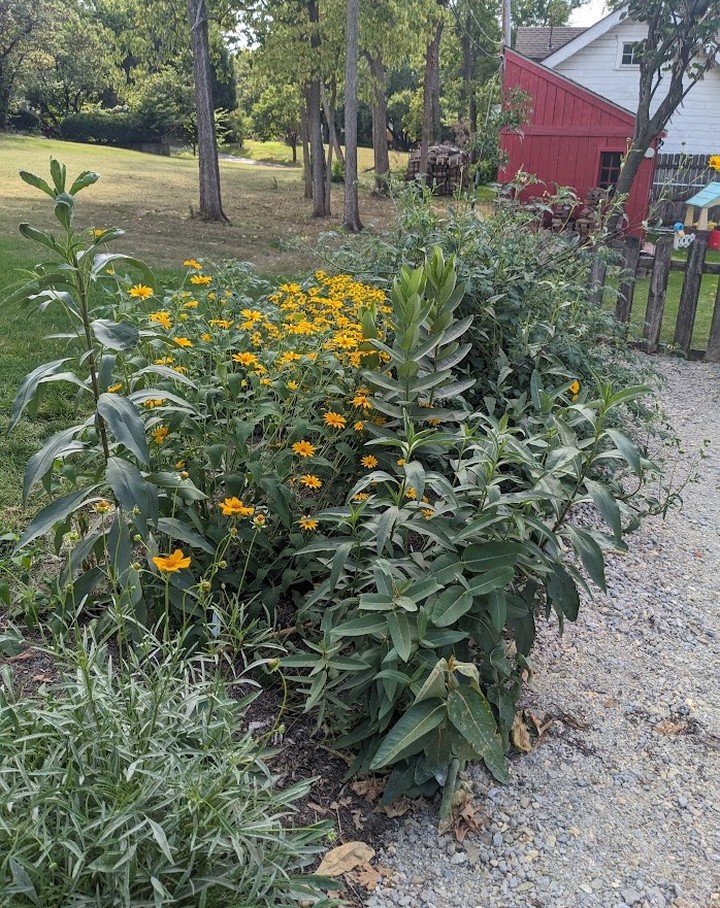
My “before” pic is unrecognizable, as the space used to be in full shade from 15-foot tall invasive honeysuckle on our neighbor’s property with english ivy and vinca on the ground.
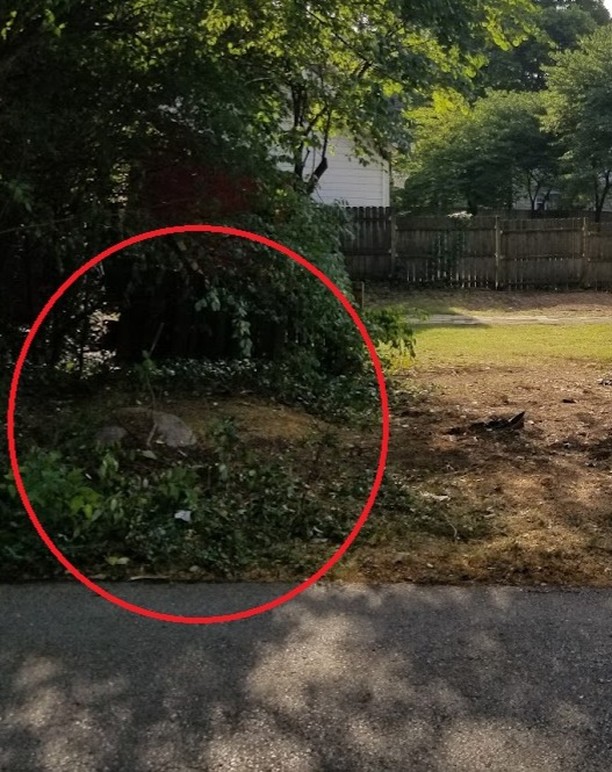
After our neighbor cleared all of the honeysuckle, that used to hang over our property, I continued the work on the ground to remove the rest of the plants and prepare the new garden in Fall 2022. Due to the small space, manual pulling was effective and I did not need to use herbicide. I did some sheet mulching with wet newspaper at the time, and most of the worst plants seem to have died off decisively, though I’m now getting a lot of crab grass popping up, but that’s been easy to keep at bay.
I considered the garden to be full sun, although trees do shade it during the earlier morning and periodically in the afternoon as well. Overall I’d say it gets roughly 6 hours of sun, which varies somewhat by season and how the sun hits the various trees. It’s a windy spot as well and relatively unsheltered, which came into play with most of the plants as they grew this year!
From a design standpoint, my ultimate goal was to layer the narrow space, with taller plants in the back and middle, with lower-growing ones closer to the street and on the outsides next to the parking spot and the other side which is the end of our property.
This means I would be selecting and planting individual species rather than using a seed mix. My goal was to still use a mix of seed and seedlings, however, but clearly plan out and mark which plants will be going where. And in the long run, I will certainly be letting these plants self-seed and if they escape beyond this small garden and make some inroads into the less manicured areas around me that have a lot of invasives, I’ll consider that a win too!
I thought a lot about what the best plants would be for this narrow, small native garden.
My plan was to plant lanceleaf coreopsis, two varieties of milkweed (asclepias), oxeye sunflower (heliopsis helianthoides), sunflowers (helianthus pauciflorus), sneezeweed (helenium autumnale), and purple prairie clover (dalea purpurea). The spacing would be very dense, as is often recommended for native plants.
For the shorter plants, the milkweed would go on the side by the parking spot, with the coreopsis in the front by the road and the dalea on the other side. The heliopsis, helianthus, and helenium (try to say those three times fast in a row!) would occupy the space in the middle and be left to grow taller. I’m hoping they can compete somewhat with each other and also provide mutual support. The garden was planned for about half the space to the fence in the back, and I’m going to let anything creep back there that wants to!
Some of these plants I as plugs, others I started from seed indoors and transplanted. My showy milkweed (asclepias speciosa)* was really easy to grow from seed! The lanceleaf coreopsis did great from seed as well.
The heliopsis, helianthus, and helenium were all purchased as plugs (2 each) and transplanted in. The helenium got major transplant shock and looked rough for a while, but after a couple of weeks watering every couple of days, it perked back up and immediately started to thrive.
(*I also learned after buying and starting the seeds that speciosa isn’t technically native to my area, but it’s still a regional native as it has some midwest range, so I made sure to add another milkweed species (sullivant’s/prairie) that is native to my exact location to complement it, since different species may bloom at different times.)
One of the biggest issues I faced was rabbits/squirrels/chipmunks/etc. eating the small seedlings. They regularly chomped on the coreopsis, and also totally devoured the heliopsis (oxeye) and seemed to even pull it up out of the ground when doing so! I did apply some liquid fence spray which for me seems to work pretty well but not foolproof. The coreopsis kept pushing out new growth and eventually got large enough so that browsing would no longer be an issue, but my heliopsis did not come back. I bought a new seedling and replanted it.
This led to my second issue: the windiness of the area. It wasn’t something I had really considered beforehand, but as the seedlings got taller a lot of the stems started to bend over after extra windy and stormy days. It was actually quite remarkable to see several of the plants bent over but curving back upwards. One exception was the heliopsis (oxeye) which blew over completely one windy day. I thought the stem had snapped but I still left it there, and I was glad I did. It proceeded to sprout multiple new shoots directly from that fallen stem, which was extremely impressive!

Here’s what the garden looked like soon after (most of the) planting.
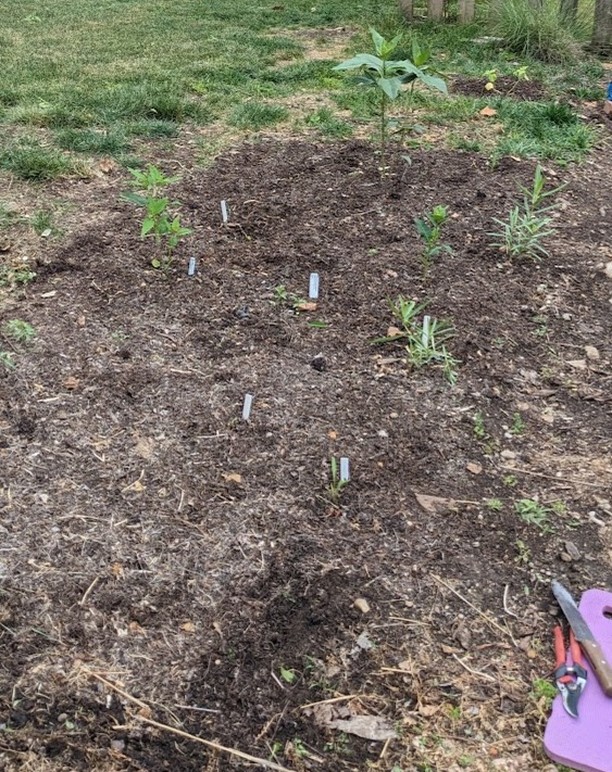
Here’s what it looked like in mid-July
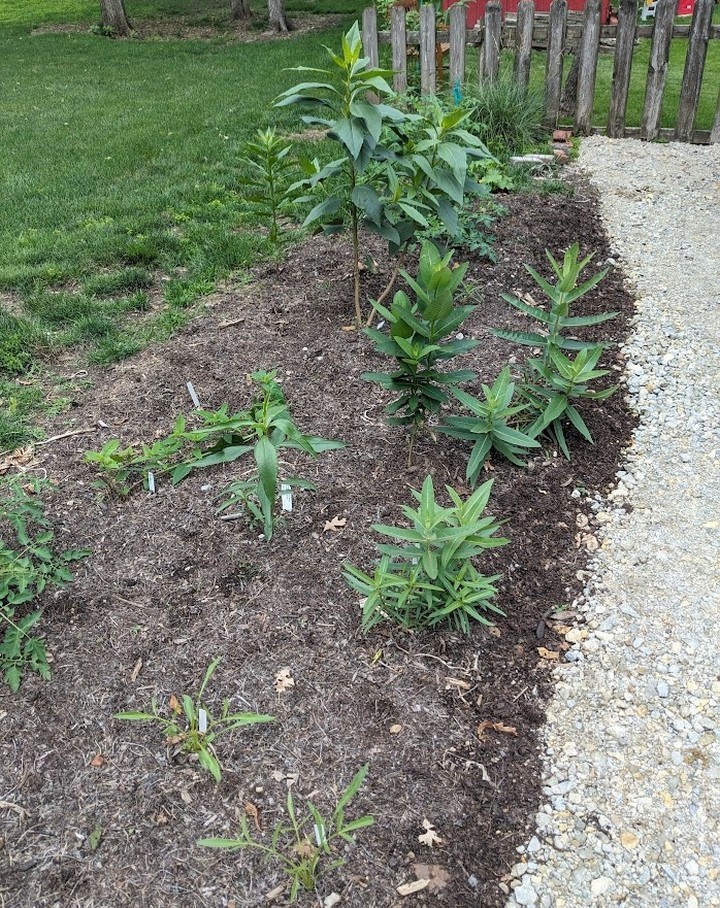
And the more recent picture again

I’ve been so happy to see so many pollinators in just this small area! There have been a wide variety of bees, moths, beetles, and more, and I also was thrilled to see my first monarch caterpillars about 2 years after I started native gardening. Looking forward to seeing what it all looks like next year!
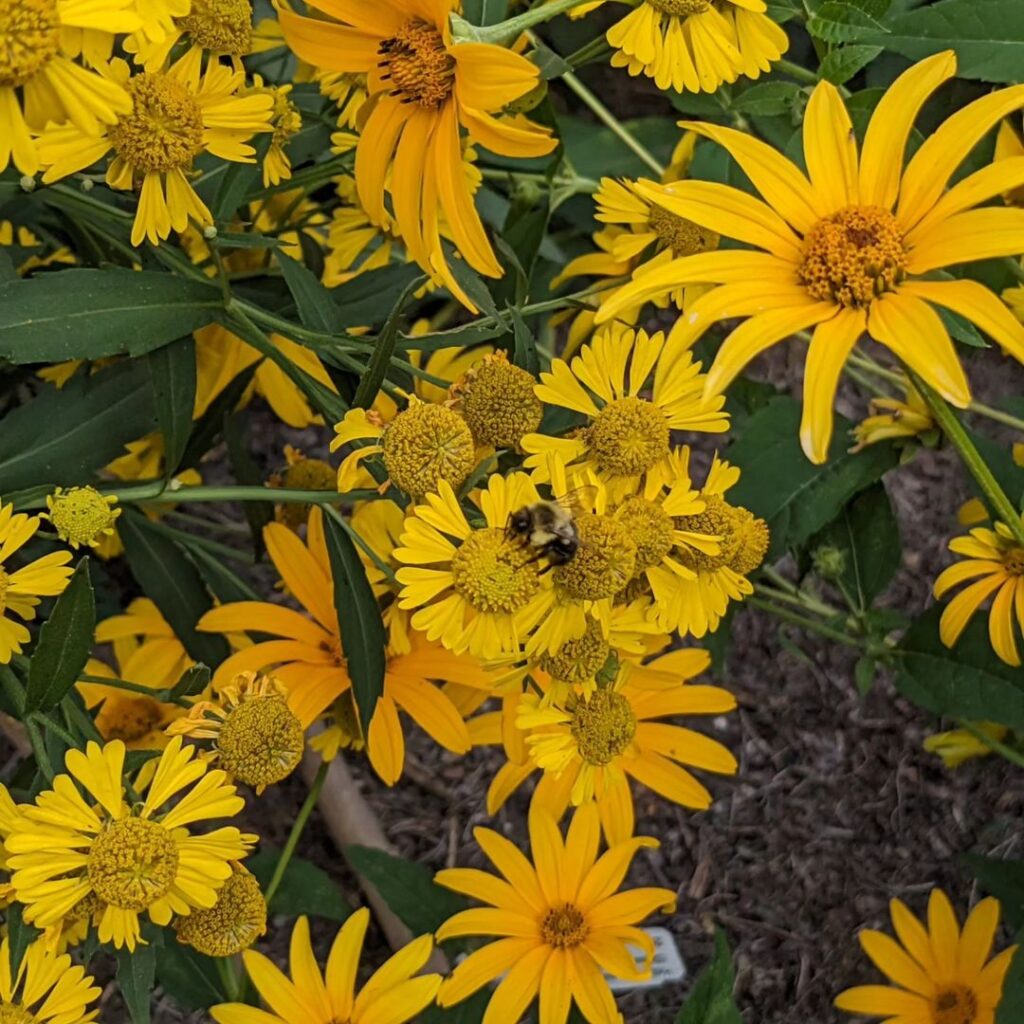
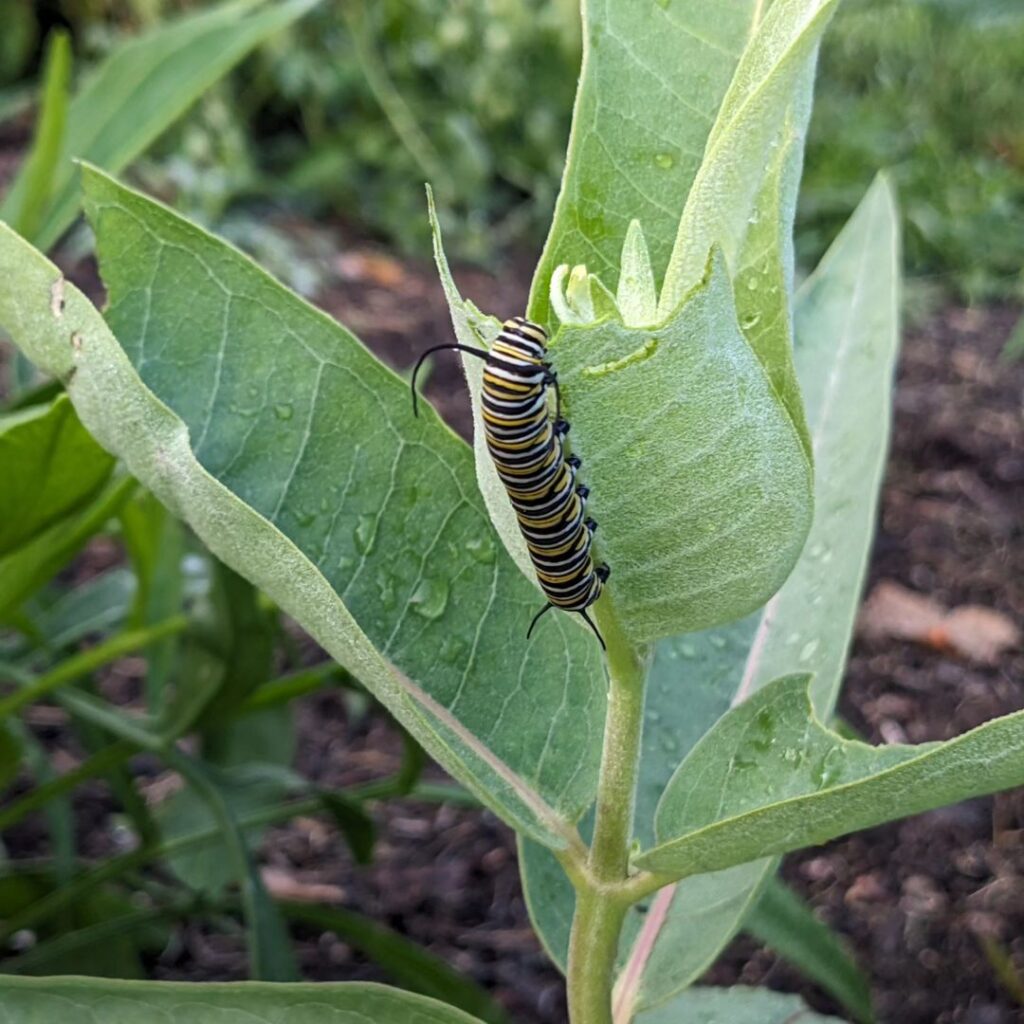
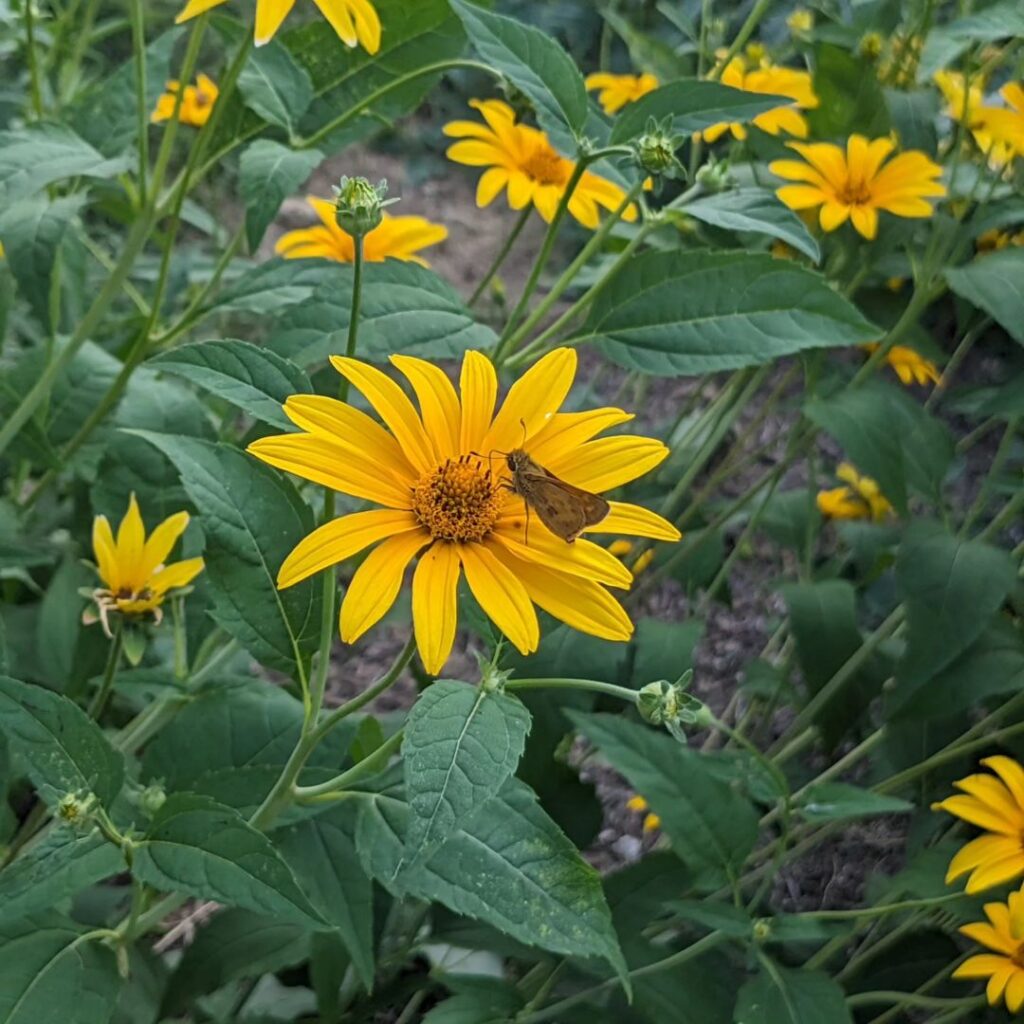
Benefits and Reasons for a Small Front Yard Native Garden
Throughout the process I also reflected a little bit about planting even in small spaces next to a parking spot or a driveway, and especially in the front of the house where they’ll be seen.
I liked the way that one article I read put it: “Although they are seen by anyone passing by, front gardens are often a bit of an afterthought. We tend to spend time designing and nurturing the outdoor space at the rear of our homes, while neglecting the patch at the front. If we are lucky enough to have off-street parking, all too often this space becomes home to a car and little else.”
Another article listed some benefits of sneaking in a small garden instead of allocating the whole space to car parking, especially on busier urban streets: “Flash flooding is probably the most contentious issue, where rainwater that would have steadily seeped into the soil rushes over the paving and floods into the land drains. Losing those precious pockets of green also significantly reduces the habitat available for wildlife. (And) it lowers air quality, making city streets much hotter at night when the heat absorbed by the paving during the day is released; this is known as the ‘heat island effect’.”
And by choosing native plants specifically, this also shows off their beauty to passersby and also their suitability for home gardens in addition to their ecosystem benefits.
Leave a Reply